The Secret Life of Pets is a fun family adventure story packed with animals from rabbits to pigs and cats to dogs. Duke is a dog, and he is also one of the main characters. But what kind of dog is Duke?
Read on to discover what type of dog Duke is and a little more about the breed.
What Kind of Dog Is Duke From Secret Life of Pets?
Duke is a Newfoundland mix, or at least that’s what the general consensus says. The film only describes him as a “mutt,” which means mongrel, and that’s a mix of different breeds. A close runner-up could be a briard mix, which is a similar large shaggy dog breed.
People think Duke is a Newfoundland mix because he is large, thick-coated, sweet-natured, loyal, and an excellent swimmer. And let’s not forget the drool. Newfoundlands are known for their sloppy chops, and Duke spends much film time dribbling or licking.
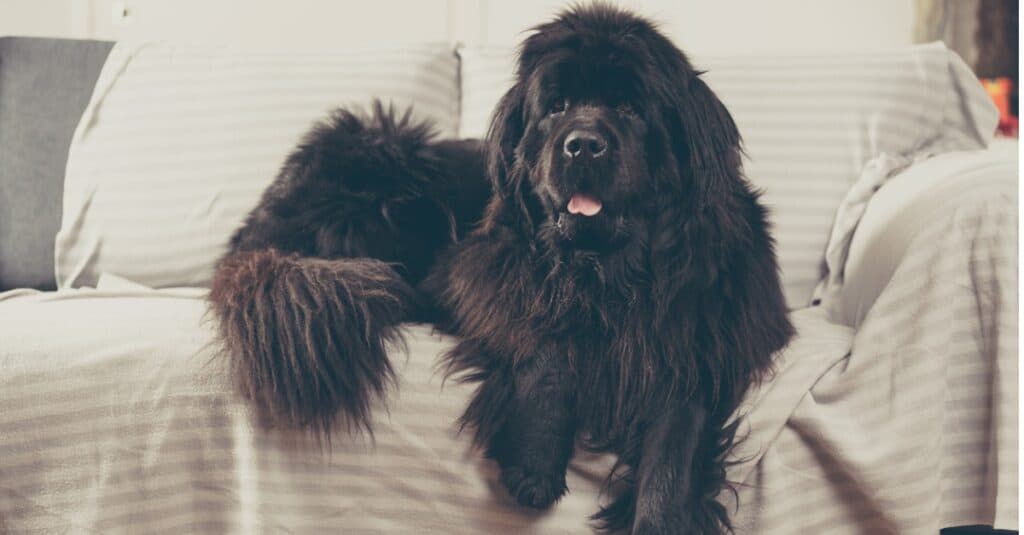
What kind of dog is Duke from
The Secret Life of Pets? He’s a Newfoundland mix.
©iStock.com/rzoze19
Newfoundland: Breed Overview
Newfoundland dogs are named after Newfoundland in Canada. Fishermen created the breed in the 17th century to act as guard dogs and to work alongside them in the cold climate and waters of the Atlantic Ocean. As a result, Newfoundland dogs have thick water-resistant double coats and webbed feet ideal for the cold seas. In The Secret Life of Pets, we see Duke is a powerful swimmer, which is one of the reasons people think he is part Newfoundland.
Newfoundlanders crossed Great Pyrenees, Leonberger, Saint Bernards, and Portuguese water dogs to create such loyal, water-savvy strong dogs. This program’s two most popular breeds are the lesser St John’s dog, which eventually became the Labrador retriever, and the greater St. John’s dog. Today we know it as the Newfoundland.
True to their roots, Newfoundlands are modern-day water and mountain rescue dogs. They’re often used in search and rescue missions across Europe.
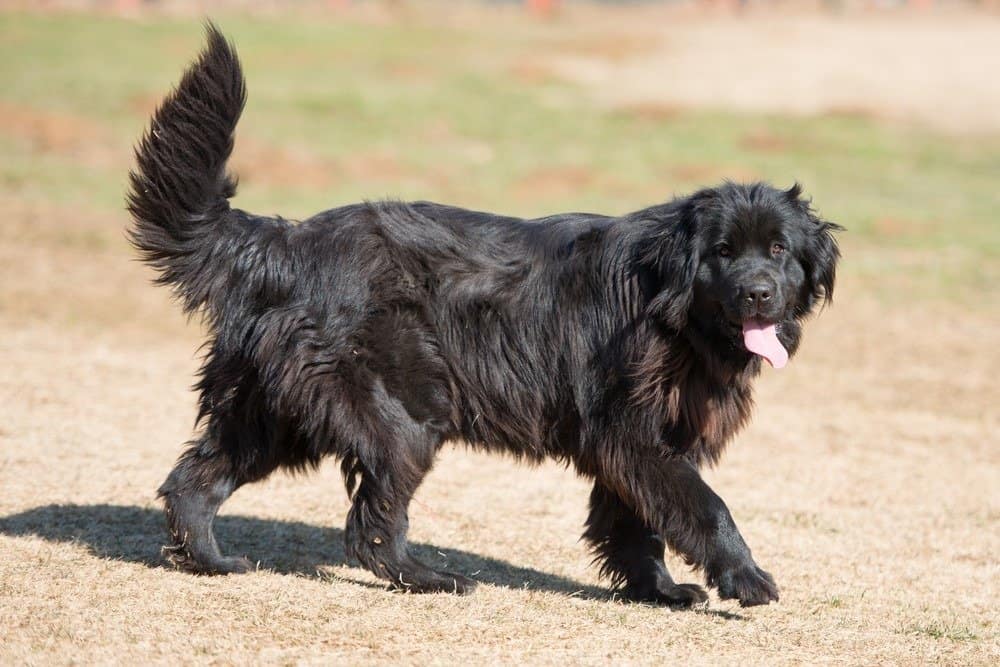
The Newfoundland dates back to the 17th century as a guard dog for the harsh conditions.
©Purino/Shutterstock.com
Newfoundland: Appearance
Like Duke, large Newfoundland dogs wear a heavy, double fur coat. Typically, it’s black, gray, or brown. Their coats are water resistant to help cope with freezing sea temperatures.
Newfoundlands are large dogs with gigantic heads topped with floppy ears, dangling jowls, and keen, intelligent eyes. Females weigh up to 120 lbs, and males 150 lbs. Even the pups are large. An eight-week-old Newfoundland pup can weigh 20 lbs, roughly the same as 24 soda cans.
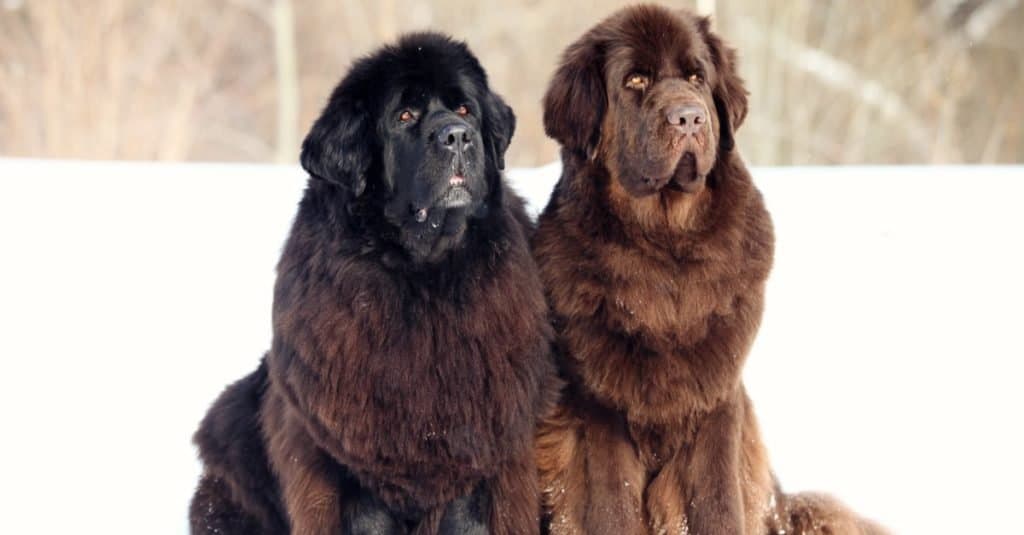
The thick water-resistant coat of a Newfoundland helps the breed deal with cold temperatures.
©iStock.com/Dixi_
Newfoundland: Temperament
Despite their large and powerful build, gentle Newfoundland dogs have earned the nickname “nanny dog” for their sweet temper and gentleness around pets and children.
Overall, Newfies are big bundles of love and fun that provide wonderful companionship and loyalty to their owners. In The Secret Life of Pets, Duke tries to act aggressively, but his sweet underlying nature wins out.
However, like most dogs, if a Newfoundland is left alone for extended time periods, it may develop separation anxiety and become destructive. This dog is a pack animal that loves company. If you want a dog that’s happily left to its own devices, a Newfoundland isn’t the right choice.
Newfoundland: Health Issues
Newfoundland dogs are prone to specific health issues, which means buying from a reputable breeder is important. Adopters should take their Newfie to a veterinarian to assess any underlying health issues.
Here are common health issues Newfoundland dogs suffer from the following illnesses.
- Eye disease: Newfies eyes are prone to cataracts and cherry eye.
- Hypothyroidism: When the thyroid gland doesn’t produce enough hormone. It can lead to obesity and lethargy.
- Hip dysplasia: When the hip or elbow joints misalign to cause pain and difficulty walking
- Cancer: Newfies are prone to cancer, one of the leading causes of Newfoundland deaths.
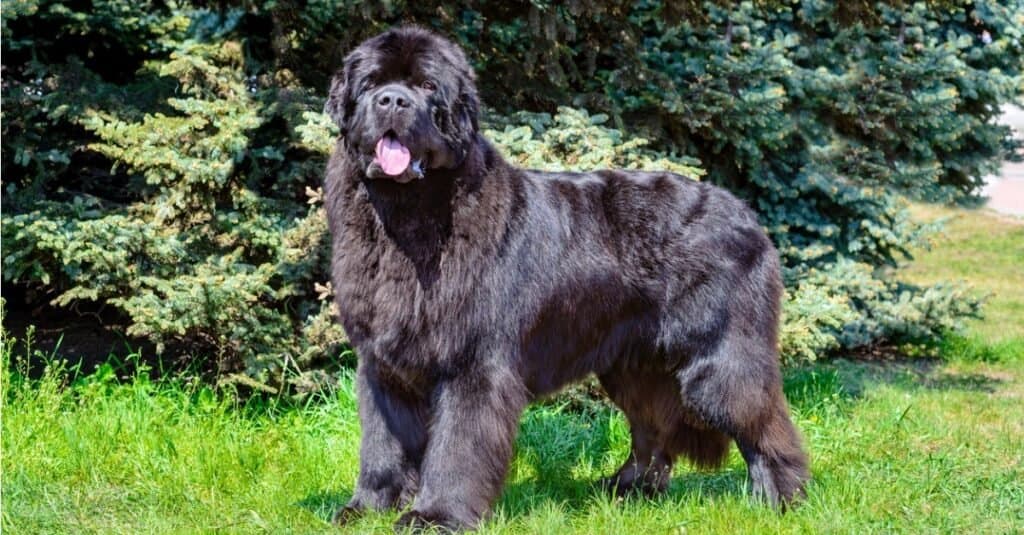
Potential Newfoundland owners should know their Newfie could have several health issues.
©iStock.com/volofin
Newfoundland: Training
Newfoundland dogs are very easy to train. Loyal and intelligent, they try their best to please and follow commands without agitation.
Training can begin as soon as a pup arrives home. The best way to train Newfoundland dogs is with gentle encouragement and positive reinforcement. Shouting or negative reactions will result in an unwillingness to work with you. These large dogs must have good command and recall reactions due to their large size.
How Much Exercise Does a Newfoundland Need?
Newfies need plenty of exercise, but they’re not the most athletic of breeds and are quite happy to lounge around the house with their favorite people. At least 30 minutes of exercise each day is required, along with a healthy diet.
Newfoundland dogs excel at long-distance exercise, so they’re good hiking or jogging companions. Of course, with their webbed feet and water-resistant coats, swimming is the ideal exercise form.
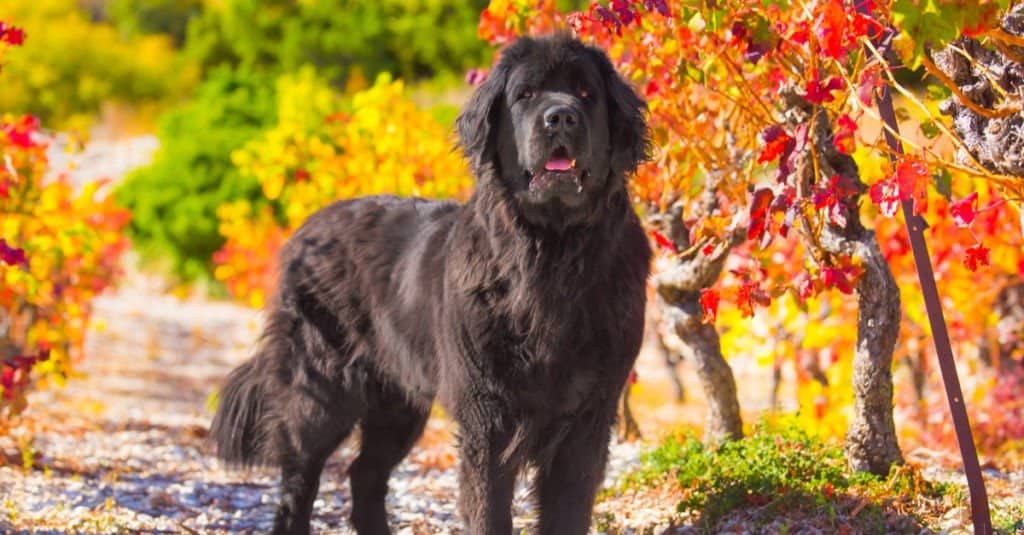
Newfoundland dogs need exercise, but they can still be couch potatoes too.
©Pandas/Shutterstock.com
What About Briards – Is Duke a Briard?
The question “What kind of a dog is Duke from The Secret Life of Pets?” is usually met with “Newfoundland mix,” but some folk think he’s a briard mix.
Large briards are not quite as big as Newfoundlands, males weigh from 50 to 90lbs, but they do have a thick and shaggy brown coat plus a sweet and loyal nature, just like Duke.
Bred in France, briards are working sheepdogs more than able to hold their own against attacks on their flocks, but at the same time, they are intelligent, sweet-tempered dogs. Because briards herd, they need enough exercise to keep them from destructive behavior. Their large bodies favor low-impact exercises such as swimming, jogging, and hiking.
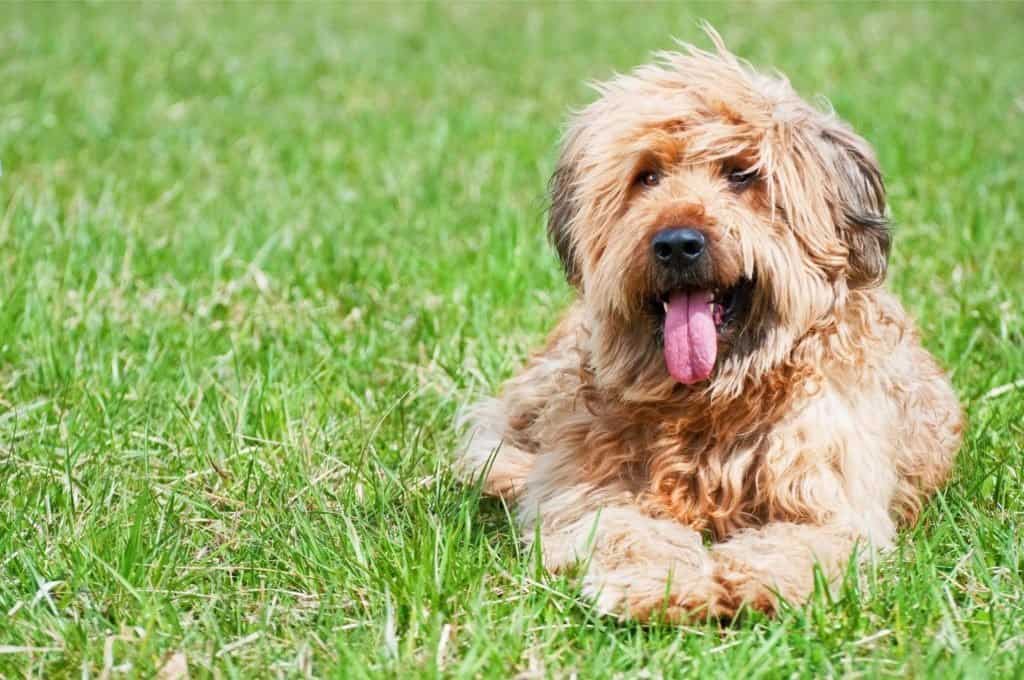
Duke may be a briard mix.
©hsunny/Shutterstock.com
What Other Animals Are in The Secret Life of Pets?
Duke from the Secret Life of Pets is a Newfoundland mix (or a Briard mix), but other animal breeds appear alongside him too. They include the following ones.
- Max from The Secret Life of Pets is a Jack Russell terrier.
- Gidget: Gidget is either a bichon frise, a pomeranian, or an American Eskimo dog.
- Chloe: Lazy Chloe is a tabby cat.
- Mel: Mel is a highly excitable pug.
- Buddy: Buddy is a dachshund.
- Sweet Pea: Sweet Pea is a budgie.
- Pops: Pops is a basset hound.
- Snowball: Bad guy leader Snowball is a white rabbit.
- Tiberius: Untrustworthy Tiberius is a red-tailed hawk.
- Norman: Eternally lost, Norman is a guinea pig.
- Ozone: Ozone is a Sphynx cat.
What Kind of Dog Is Duke From The Secret Life of Pets?
The film studio says Duke is a mutt, and most people think Duke is a Newfoundland mix due to his shaggy brown coat, drooling jowls, and loyal nature. Another potential is a French briard.
Both of the dogs are good bets for Duke’s heritage. Perhaps he’s a mixture of both!
The photo featured at the top of this post is © iStock.com/volofin
Ready to discover the top 10 cutest dog breeds in the entire world?
How about the fastest dogs, the largest dogs and those that are -- quite frankly -- just the kindest dogs on the planet? Each day, AZ Animals sends out lists just like this to our thousands of email subscribers. And the best part? It's FREE. Join today by entering your email below.
Thank you for reading! Have some feedback for us? Contact the AZ Animals editorial team.






